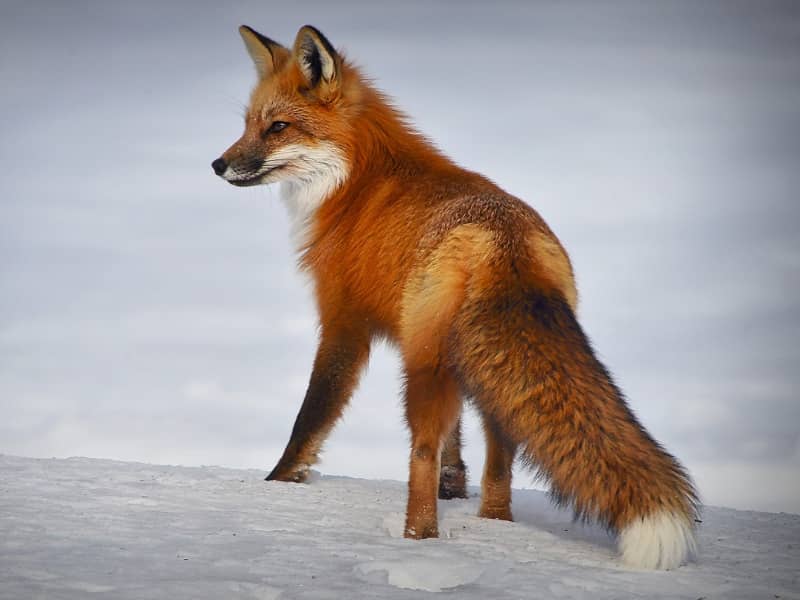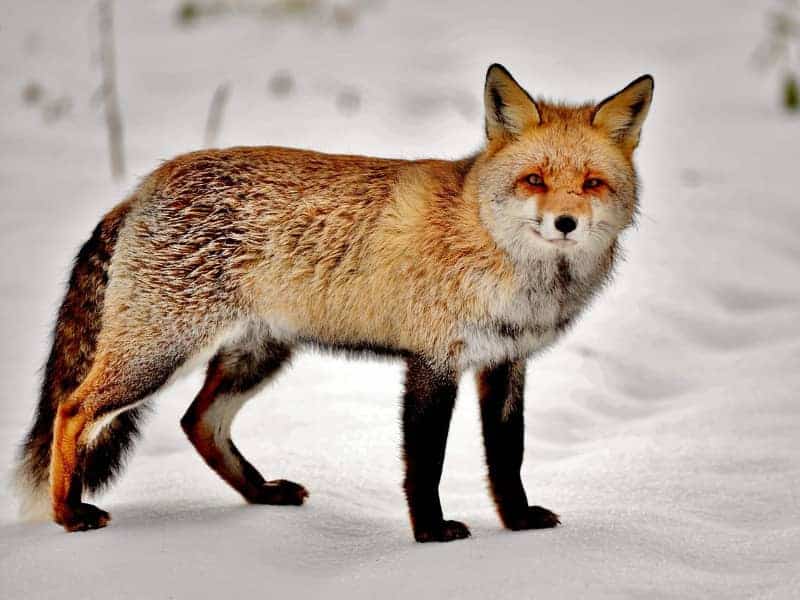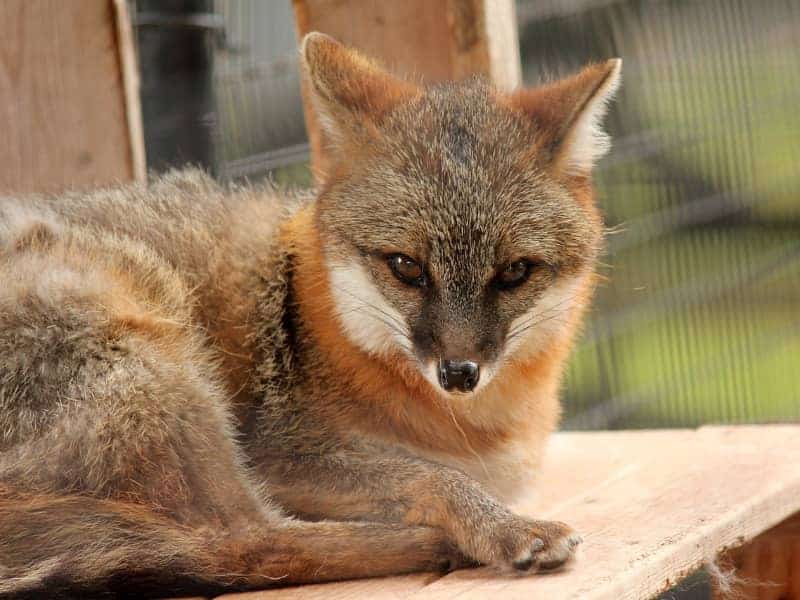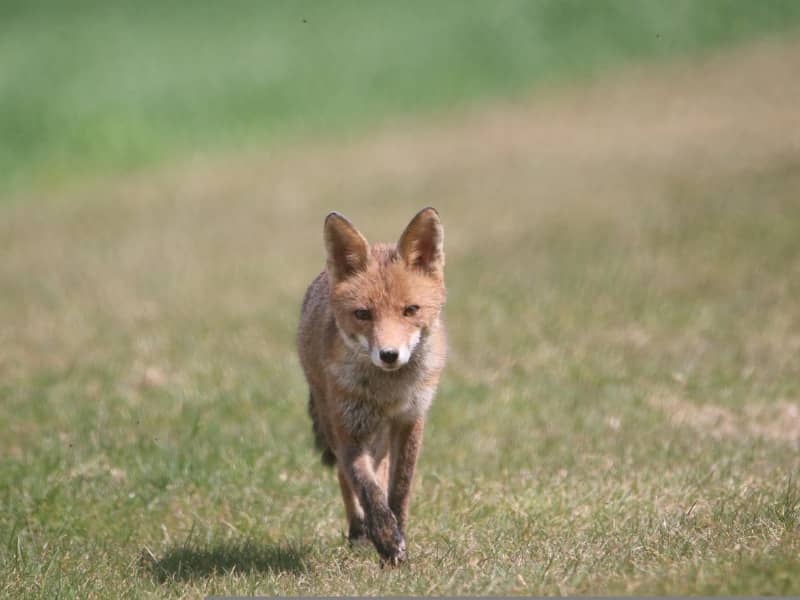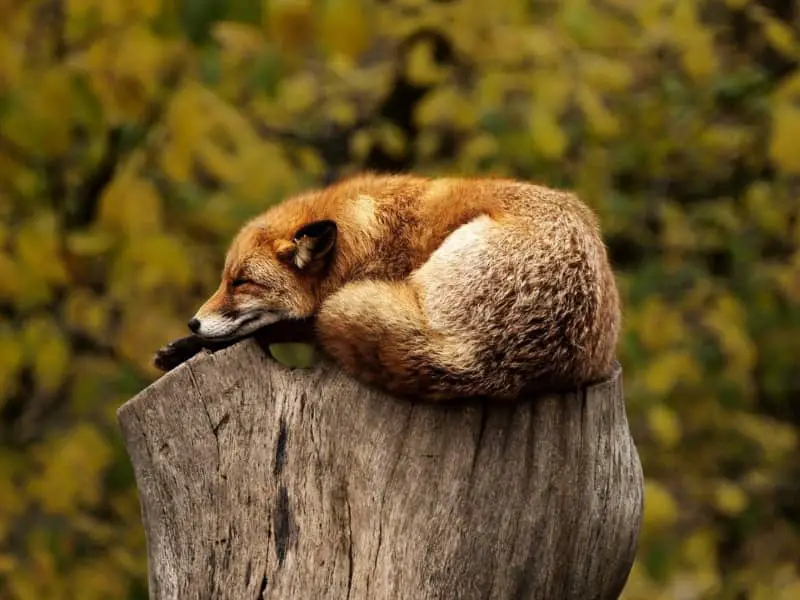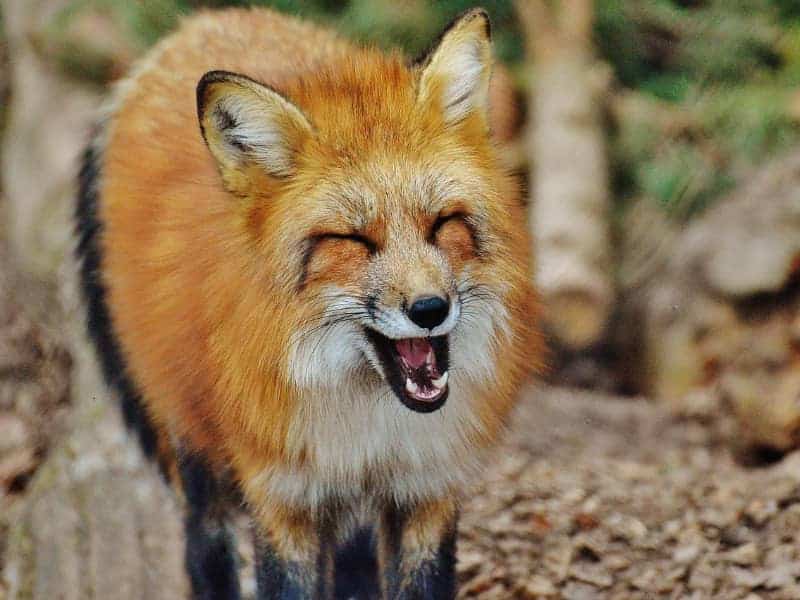
Fox barks
When a fox barks, you can be sure that this is a contact call from the animal. This call is to show the other foxes where the barking fox is. During the mating season, you will hear these sounds often when two animals are approaching each other. The time is limited to December to February and then only at night.
Fox barks, bleats or warns
Besides the fact that a fox barks, there are also other sounds that the animal makes. While the barking, as already mentioned, belongs to the contact calls, the yelping is something completely different. The piercing loud shriek comes from a fox that is involved in an aggressive dispute.
During the year you will hear the bleating very often. In the mating season this occurs when two sexually mature and rival males approach each other.
The long and monosyllabic screams of the females are just as loud and insistent, almost eerie. They want to warn young animals of danger. Especially in the months April to July you will hear this scream more often.
Foxes in the garden or residential area
More and more often dare Foxes also in domestic gardens. They are in search of food. The advantage here is that foxes hunt rats and mice, keeping them away from your home. Of course, this does not always happen silently.
The fox belongs to the nocturnal mammals, which is why you mostly perceive its sounds at night. The red fox is native to Germany. At first glance, it looks deceptively similar to a dog, although its physique is rather delicate and lithe.
An adult animal has a body length of about 1.5 m and weighs between 4 and 8 kg. Even if the fox is generally on the move at night, you can also meet him during the day.
The sounds of the fox
On average, a fox can make up to 30 different sounds. However, we would like to discuss only the most important ones here.
- Shrill scream - It is probably one of the most frightening sounds an animal makes. To humans, it sounds like a baby crying or a cry of pain. The cry of the fox sounds in sets at intervals of 3 to 10 seconds. Females use this cry to attract males. In males, it is more of an aggressive cry to warn rivals.
- Bark - Experts speak here of rancid barking during the mating season. This takes place between December and February. When a female animal cries out for a male, the male will respond with a bark. The sound sounds like a dog barking, but at a much higher pitch. Sometimes the barking is confused with the hooting of owls.
- Growl - Only when threatened, the Fox growl. Rivals can also recognize this by his posture. It signals a certain readiness to fight. This is either about defending the territory or a female. If you encounter a growling fox, you should rather take cover.
Other occasions of barking in foxes
The red fox (Vulpes vulpes) biologically belongs to the canine family (Caniformia). This means that the fox is related to both the wolf and the domestic dogs. So it can be said that the fox belongs to the wild dogs. The occasions of barking are different:
- During the mating season there is talk of rancid barking
- Threatening barking between at rival males
- Barking to defend the territory
- Greeting old animals
- Dispute among young foxes
Why does the fox bark in winter?
This has only to do with the mating season. This is between December and February. Foxes are then very communicative and make themselves known especially at night by barking.
Author

-
Garden animal - A life with nature
Welcome to my animal blog! My name is Dirk and I am happy to take you on my journey through the fascinating world of animals and gardening.
Born 54 years ago, I have had an insatiable curiosity for the animal world around me since childhood. Although I have moved professionally in other industries, my true passion has always been animals and nature. It is remarkable how a small garden has become such an important part of my life.
Many of my fondest memories are associated with the animals that share our home. Whether it's the curious squirrels that scurry across the trees in the morning, the colorful variety of birds that visit our feeders, or the busy bees and butterflies that pollinate our flowers, every moment with them is invaluable to me.
This blog is my contribution to share my experiences, discoveries and insights with like-minded people. Here I will share stories of unforgettable encounters with animals, give tips on gardening and creating wildlife-friendly habitats, and take you on my journeys through nature.
Thank you so much for being here!
Cordial,
Dirk aka garden animal
Last posts
- 27. February 2024PetsVeganes Hundefutter – Grün und Gesund?
- 18. January 2024ChickensOregano für Hühner
- November 27, 2023HamsterDiurnal hamsters
- November 24, 2023HamsterHamster hammock


